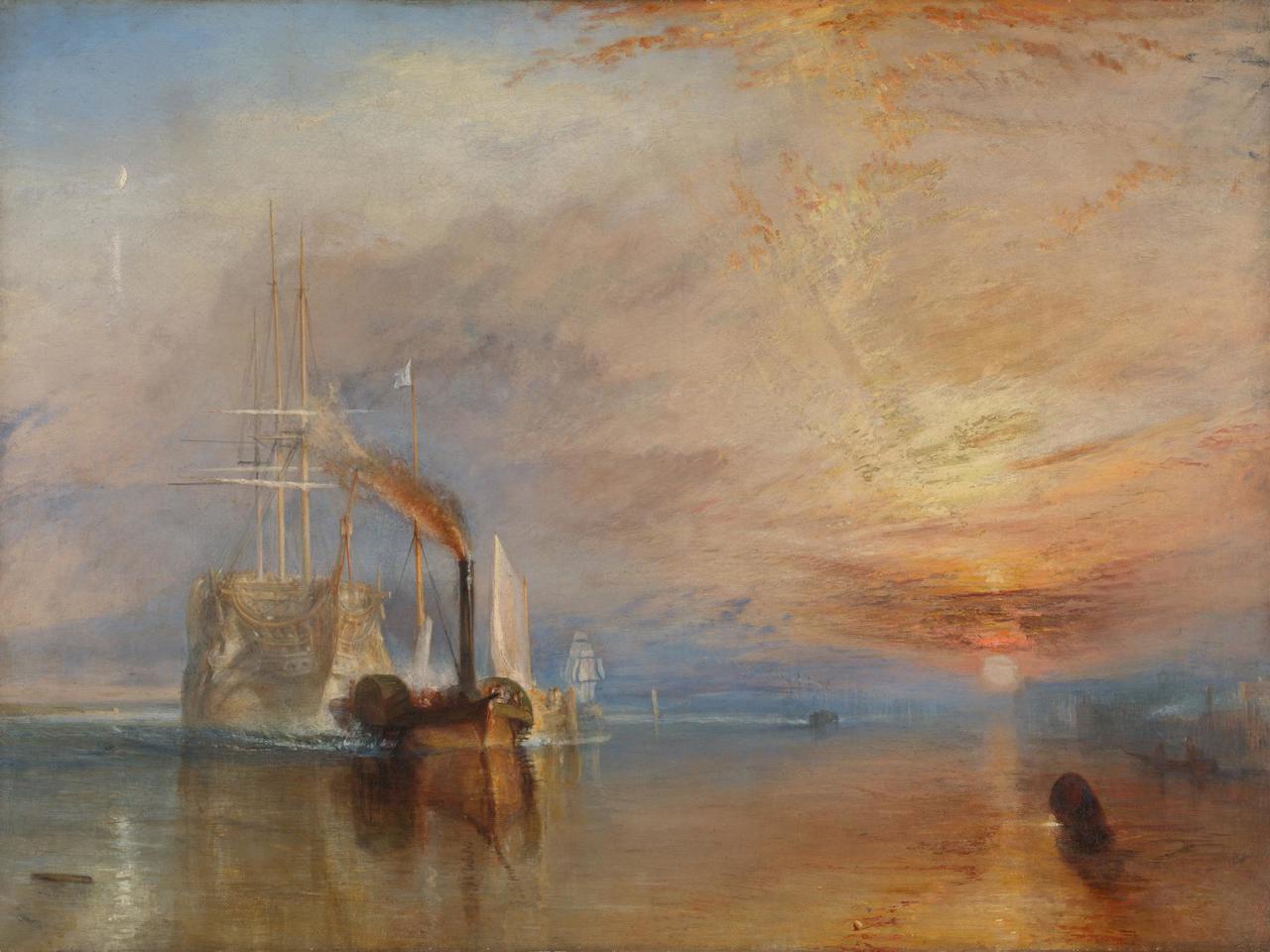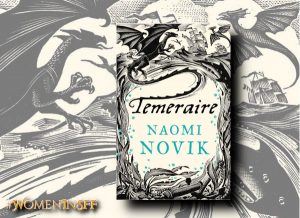TEMERAIRE by Naomi Novik (BOOK REVIEW)

The plot to Naomi Novik’s debut is essentially that, following the capture of a French frigate Novik’s hero Captain Laurence finds himself in sudden possession of a dragon egg that is on the brink of hatching. This is a parallel world where dragons – while rare – are far from unknown and indeed form an important element of most nations’ armed forces. In order to be of use to its new British owners the dragon must be harnessed and partnered with a human immediately upon hatching and – by a slightly circuitous route – Laurence ends up harnessing and naming the newly hatched dragon.
I have something of a love-hate relationship with the dragons of fantasy. I like powerful, intelligent, fearsome, fire-breathing monsters like most of us, but I like them in the singular. When dragons become a plethora – a veritable swarm, an aerial herd of indistinguishable monsters, I find the whole majesty and mystery of the creatures feels watered down. So I have held off reading dragon books for a while, though I have always been tempted by Novik’s Temeraire for another particular reason.
You see my first teenage excursion into writing was a series of dreadful Hornblower style naval novels fuelled by my appetite for the history and the fiction of that Napoleonic era. I had devoured the Bolitho novels of Alexander Kent, the Ramage novels of Dudley Pope and the Aubrey and Maturin masterpieces of Patrick O’Brian. I’d even invested in a reprint of Falconer’s Marine Dictionary to make sure my own work could display the difference not just between larboard and starboard but between box hauling and club hauling a square-rigged ship. And as any student of naval history (and indeed naval art) knows the “fighting” Temeraire was a three decked 98 gun ship of the line that fought alongside Nelson’s flagship Victory. So an individual dragon named by its new owner after a Nelsonic battleship in a quasi-historical Napoleonic setting is sort of like catnip for me.

W.M.Turner’s painting of The Fighting Temeraire in 1838 being towed away to be broken up
While Novik never mentions a year, events place this story slap bang in a parallel version of 1805 – the run up to Nelson’s last and greatest battle at Trafalgar. It was a febrile time with the south of England cowering before the threat of an invasion by Napoleon and his invincible army. History would draw its own parallels with 1940 and the threat of a German invasion after the fall of France in the second world war. The same kind of fear and panic and measures of desperate defence. As in 1805 the British of 1940 depended on their navy to command the English Channel (or La Manche as the French call it) and sweep the invading barges away. However, by 1940 the development of aerial warfare meant the Navy first needed the air force to maintain command of the skies and protect it while its ships trashed the invading fleet – hence the strategic significance of the Battle of Britain and the famous debt of so much owed by so many to so few. In bringing in dragon mounted aviators and the ensuing additional dimension of combat, Novik’s narrative presents a delicious strategic mashup of the perils of 1805 and 1940 that appeals to the historian in me.
Novik does not overwhelm the reader with naval jargon, but she does use some startlingly accurate details, like the way epaulettes were used to denote a captain’s seniority. The depiction of the language and manners of the time also echo the contemporary writing of Jane Austen, with men and women jealous of status, honour and the inviolability of any “understandings” about potential marriage. But much as that verisimilitude helps enfold the reader in the world of pride, prejudice and dragons, these are not the only reasons that Temeraire soars above some of my more disappointing experiences of fantasy dragons.
Laurence’s reassignment to the aerial corps means the naval aspect of the story fade away rather quickly. Laurence does keep in touch with some of his former colleagues, preserving something of the camaraderie of the wardroom so faithfully rendered by O’Brian and Hornblower, Novik swiftly transports reader and protagonists to a combat training school at a covert (aka dragon aerodrome) somewhere in the depths of Scotland. At this point, there was a risk of the story descending into the tropes of school training with lessons to be learned, rivalries to be developed, bullies confronted and all this against a backdrop of a bewildering abundance of dragons. There are, however, a few ways in which Novik evades the tropes and tells a story that is a refreshingly different kind of training montage.
The first lies in the character and experience of Laurence. He is a grown man successful in his own field and confident of his place in society suddenly flung into the challenges of a different world. He is thus more like the mature student turning up to start university, than the callow Harry Potter style first year all wide eyed and innocent in life as well as magic that is the staple of so many training school tales.
This greater maturity and experience, along with the stiff formality of their late Georgian society, plays out in the interactions between the officers. While Novik’s air corps are somewhat more relaxed in matters of discipline than the Navy or the Army their wardroom is a world away from juvenile schoolrooms and houses I have read about elsewhere.
There is also then the character of Temeraire, a fiercely intelligent creature of canine loyalty and feline majesty. Yet within that there is (as befits one just hatched from an egg) a childish innocence and curiosity that perfectly complements the experience of Laurence. Also, Novik introduces elements of vulnerability in Temeraire, doubt and uncertainty that emphasise the parent-child nature of their relationship. Again an interesting transposition of the trope of ancient powerful beast that protects and educates its human companions.
Novik’s conception of dragon combat is also interesting. These dragons carry a fighting crew aloft, somewhere between a flying version of the fearsome oliphants of Tolkein’s Haradrim and the majesty of a four engine Avro Lancaster or Flying Fortress spitting fire from multiple machine guns. While the dragons can and do wreak destruction with breath and talons, the crew dancing around their hides and even boarding other dragons like in the ships Laurence once sailed adds variety to the spin and dive of aerial combat.


Within the school environment there are also the subtleties of interpersonal conflict, though Novik quickly dispenses with the trope of cliques and bullies. The reason why Laurence doesn’t initially fit in and has only a solitary dining/chess companion to call his own, is cleverly done and made a nice twist that was addressed with a tone entirely in keeping with the fidelity to period manners. Though Novik also finds a neat way to evade the gender bias of the time that made O’Brian and Forester’s works so almost exclusively male. The presence of women aviators and ground crew is neatly delivered and adds a better gender balance than a faithful replication of that society would strictly allow.
The story builds to its crescendo as the long months of training comes together and Temeraire’s squadron (I cannot think of a troop of flying fighting animals as anything else) take up active deployment. As the autumn months lengthened into October, I found myself counting down the days towards the 21st October – Trafalgar day – and wondering what part the flying Temeraire might play alongside the fighting Temeraire. In the end however, Novik delivers another sharp twist to her story and draws in one more historical reference, inciting a mythical defence of another island nation – Japan – in a very satisfying denouement.
Overall Temeraire both surprised and entertained me, against my expectations of a book filled with so many dragons. As with all fantasy tropes – the trick is to take one and do something different with it, something Novik succeeds in admirably here.


One of the things I love about this book is the way Novik’s nineteenth century characters think and feel and act like nineteenth century people, not like twenty-first century people dressed up. She makes it believable that yes, this is pretty much how that society would have been with the addition of a dragon air force.